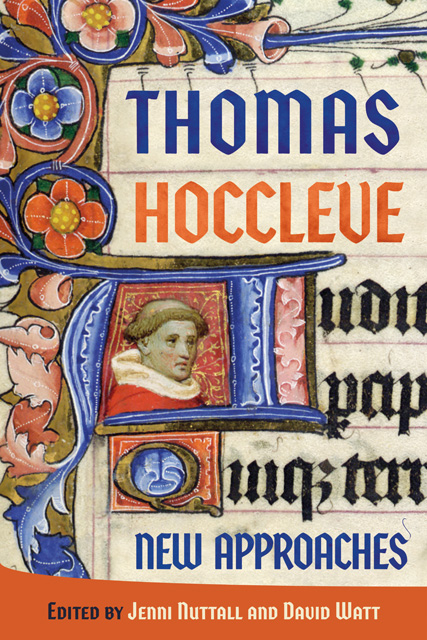2 - Speech Acts and Conversation in the Series
Published online by Cambridge University Press: 11 January 2023
Summary
Hoccleve’s Series is not an obviously unified work. Its elements represent a variety of genres and the structure of the whole – in keeping with its title – depends largely on its sequence. The texts are not an anthology that could be easily re-ordered, but a set of poems arranged into a coherent sequence via the framing narrative that is also, at times, a part of the collection. Indeed, when the name ‘Series’ was first attached to the text in print by E. P. Hammond, it was given as a description used ‘for convenience’ rather than a clear attempt to title this ‘partially-linked set of poems and prose moralizations’; the easiest way to label it was evidently to note that, whatever the content of texts, they do have an order to them. Thus the opening ‘Complaint’, Thomas’s solitary articulation of his grievances and anxieties, leads directly into the ‘Dialogue’, in which Thomas is joined by a friend who reads his complaint and responds to it. In their subsequent conversation, Thomas agrees he will delay his intended next project, a translation of Suso’s Horologium Sapientiae (here titled ‘Lerne for to Die’, D 206), until after he has translated a fabula from the Gesta Romanorum as an apology to women offended by his earlier writing. Following these four texts, the Friend re-appears to request that Thomas translate another fabula, this time one censorious of women, which becomes the fifth and final text of the Series. The five texts are thus not only ‘partially-linked’ by their inclusion within a frame narrative, as scholars handily recognise, but more specifically, set into their sequence by the flow of a conversation that periodically takes up text selection and thus determines the further entries in the Series.
While at least some structural links in the Series are evident, unifying thematic concerns are harder to come by, though scholars have worked to identify resonances that persist from poem to poem. For example, Hisashi Sugito explores how the use of the terms taste and savour allows the ‘Complaint’, ‘Dialogue’ and ‘Learn to Die’ to address common themes of experiential knowledge and the limits of language; Karen Winstead finds ‘substantial unity of design and purpose’ in the Series’s self-mocking account of the nature of women, especially in the connection of the ‘Dialogue’ to the two fabulae.
- Type
- Chapter
- Information
- Thomas Hoccleve New Approaches , pp. 47 - 64Publisher: Boydell & BrewerPrint publication year: 2022



